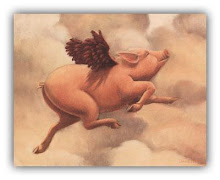 Let's Get Back to Worksheets!By Bill Costello : BIO 22 Sep 2009
Let's Get Back to Worksheets!By Bill Costello : BIO 22 Sep 2009
The U.S. is falling behind the world in math. Secretary of Education Arne Duncan said, "We are lagging the rest of the world, and we are lagging it in pretty substantial ways."
A special analysis put out by the National Center for Education Statistics found that the math performance of U.S. high schoolers was in the bottom quarter of the countries that participated in the most recent Program for International Student Assessment.
Results of the 2009 ACT and SAT show that U.S. students are no better in math this year than they were last year. Math performance has improved in other countries while it has remained stagnant in the U.S.
These findings are disturbing in an increasingly global economy where careers in science, technology, engineering, and math (STEM) are becoming progressively more important for nations to compete internationally.
According to the U.S. Government Accountability Office, the proportion of students obtaining STEM degrees from U.S. universities has dropped from 32 percent to 27 percent over the past decade. At the same time, the percentage of non-U.S. students earning these degrees from U.S. universities has increased dramatically.
In The World is Flat: A Brief History of the Twenty-First Century, Thomas Friedman argues that getting more Americans to pursue careers in STEM fields is critical to the future of our nation's economy. Friedman is not alone in his opinion.
The National Science Foundation reports that non-U.S. graduates from U.S. universities accounted for more than half of the doctorate recipients in physics (58 percent), computer sciences (65 percent), engineering (68 percent), and mathematics (57 percent). The most numerous of these non-U.S. graduates were from China, India, and South Korea. The Organization for Economic Cooperation and Development found that over 40 percent of non-U.S. doctoral degree recipients intended to leave the U.S.
Not only are we losing ground to non-U.S. citizens at our own universities, but we're also falling behind other nations. The U.S. is no longer the leader in STEM education. In absolute numbers, Japan and China are producing more graduates. Our rate of STEM to non-STEM graduates is roughly 17 percent while the international average is nearly 26 percent. We're not even keeping pace with some developing countries.
President Obama has acknowledged that other countries--especially Asian countries--are performing better in math than the U.S. How does he plan to prevent us from falling farther behind?In the U.S., we used to focus on basic computation skills when we taught students traditional math. Ever since the U.S. National Council of Teachers of Mathematics developed standards for school math in 1989, many U.S. schools starting teaching reform math.
Recently, I visited schools in Japan and Taiwan. I found they're teaching math the way we used to teach it; they're focusing on basic computation skills.
Hong Kong, Singapore, and South Korea--all top performers in math--are also focusing on the basics. Even the cram schools, which are prevalent in Asia, focus on the basics.
The largest and most established cram school in Asia is
Kumon. I visited their head office in Tokyo to interview public relations executives Mayu Katata and Shinichiro Iwasaki about the Kumon method. In a nutshell, they focus on using worksheets to help students master basic computation skills.
Traditional math emphasizes basic computation skills and algorithms that lead to the correct answer while reform math places more value on the thinking process that leads to any answer.
Both of these skills are needed. However, the major problem with reform math is that it puts the cart before the horse by trying to teach students abstract concepts of math before they have built strong foundational skills. With traditional math, students often work individually on worksheets. With reform math, they often work in groups cutting, pasting, and coloring.Sure, worksheets and algorithms are boring compared to gluing stuff and explaining how you came up with an answer that may not even be correct, but which method will better prepare our students to compete in an increasingly global economy?
America, let's get back to worksheets.
Bill Costello, training director of Making Minds Matter, teaches parents and teachers the best strategies for educating boys. He can be reached at www.makingmindsmatter.com or trainer@makingmindsmatter.com.
 It's 7:30 in the morning, and I'm off to host a booth at NMJACL's 2009 "Aki Matsuri" (fall festival). Kumon of Rio Rancho proudly donated the first place prize for this year's raffle, and will also be conducting drawings every hour for Kumon books and gift certificates. All of the profits from this event go towards building a Japanese Cultural Center in the Albuquerque metro. If you're in the area, we'd love to see you there.
It's 7:30 in the morning, and I'm off to host a booth at NMJACL's 2009 "Aki Matsuri" (fall festival). Kumon of Rio Rancho proudly donated the first place prize for this year's raffle, and will also be conducting drawings every hour for Kumon books and gift certificates. All of the profits from this event go towards building a Japanese Cultural Center in the Albuquerque metro. If you're in the area, we'd love to see you there.






 These young people are incredible musicians! Under the direction of the very personable and entertaining
These young people are incredible musicians! Under the direction of the very personable and entertaining  We began with a "Beef Carpaccio", which came crowned with fresh baby arugula, pickled cucumber, red onions & capers, and dressed with a wonderful wasabi creme-fraiche and chili oil.
We began with a "Beef Carpaccio", which came crowned with fresh baby arugula, pickled cucumber, red onions & capers, and dressed with a wonderful wasabi creme-fraiche and chili oil.









